Fly fishing is an art form, a delicate dance between angler and fish, with a variety of techniques designed to lure and catch fish. One such technique, often revered for its effectiveness in catching larger fish, is the use of fly fishing streamers. But what exactly is a fly fishing streamer?
This article will delve into the intricacies of streamer fishing, exploring what makes it a favored method among fly anglers, and offering tips and insights on how to use these artificial flies to catch everything from small fish to trophy-sized trout.
Key Takeaways:
- Fly fishing streamers are versatile and effective for catching large fish, particularly trout.
- Streamer fishing involves using larger, more lifelike flies to mimic baitfish and other prey.
- Techniques such as casting upstream and using articulated flies can significantly increase your chances of success.
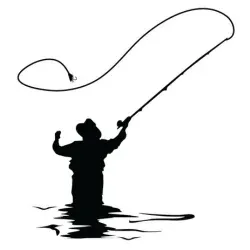
Understanding Fly Fishing Streamers
A fly fishing streamer is a type of artificial fly that imitates larger prey than the typical insects imitated by dry flies or nymphs. Streamers are designed to mimic smaller fish, crayfish, leeches, and other sizable aquatic creatures that larger fish, such as trout and bass, feed on. Unlike dry fly fishing, where the fly floats on the water's surface, streamer fishing involves submerging the fly to target fish that are feeding deeper in the water column.
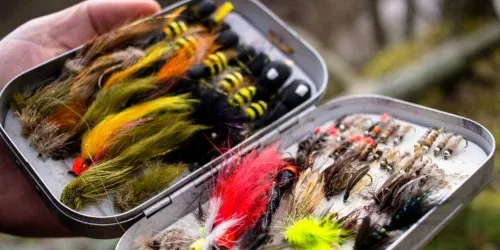
Streamer Fishing: A Versatile Technique
Streamer fishing is highly versatile and can be adapted to various water conditions and fish behaviors. Whether you are fishing streamers in fast-flowing rivers or still lakes, the technique can be adjusted to suit the environment. The active retrieve is a hallmark of streamer fishing, where the angler imparts action to the fly by stripping the line in varying speeds and patterns to mimic a struggling baitfish or other prey.
Types of Fly Fishing Streamers
There is a wide variety of fly fishing streamers, each designed for specific conditions and fish species. Wooly Buggers, for instance, are versatile streamers that can imitate various prey, from minnows to leeches. They are effective in both clear and murky water. Articulated streamers, on the other hand, have jointed bodies that create lifelike movement in the water, making them highly attractive to predatory fish. Mouse patterns are designed to imitate small rodents swimming in the water, a favorite meal for large fish like brown trout. Additionally, streamers that mimic large aquatic insects such as dragonflies and damselflies are particularly effective in lakes and ponds.
Techniques for Fishing Streamers
Fishing streamers involves several techniques, each tailored to specific conditions and fish behavior. Casting upstream allows the streamer to drift naturally with the current, resembling a struggling baitfish. An upstream mend can help the fly sink deeper into the strike zone. Another technique, the dead drift, involves allowing the streamer to drift naturally without imparting any action, which can be effective, especially in slow-moving water or when fish are not actively feeding.
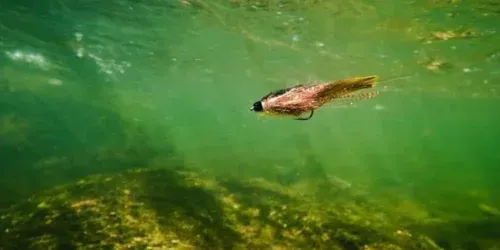
The strip retrieve involves stripping the line in short, sharp bursts to mimic the erratic movement of an injured baitfish, enticing predatory fish to strike. Casting heavy streamers using weighted streamers or adding split shot to the line helps the fly sink deeper, ideal for fishing deep water or during colder water temperatures when fish are less active. Night fishing can also be incredibly productive, as many large fish, especially brown trout, feed more actively under the cover of darkness.
Gear for Streamer Fishing
Proper gear is essential for effective streamer fishing. A sturdy rod with a fast action is ideal for casting heavy streamers and handling large fish. Rods in the 6-8 weight range are commonly used. A sinking or sink-tip fly line helps get the streamer down to the desired depth quickly, though floating lines can also be used with added weight on the streamer or leader. Using a thicker tippet, such as 2X or 3X, helps handle the aggressive strikes and fights from larger fish. It’s important to carry a variety of streamers in different sizes and colors to match the local prey and water conditions, with larger flies generally more effective for targeting big fish.

Why Use Streamers
Streamer fishing is popular among fly fishers for several reasons. One of the primary reasons is the ability to target bigger fish, as streamers are effective for catching these larger predators by mimicking the prey they prefer. The versatility of streamers is another significant advantage, allowing them to be fished in various water types and conditions, from fast rivers to still lakes.
Streamer anglers love this stlyle of fishing because it is action-packed, with an active retrieve required making it an engaging and dynamic way to fly fish. Lastly, streamers often produce results when other fly fishing techniques fail, particularly in murky water or during periods of low fish activity.
Types of Fish Best Targeted with Streamers
Streamer fishing is particularly effective for targeting a variety of larger fish species. One of the most common targets is the brown trout. Known for their elusive nature and preference for larger prey, brown trout are often more willing to strike at trout streamers than a dry fly or nymph.
Rainbow trout, another popular target, are aggressive feeders and readily chase streamers, especially in lakes and larger rivers. Smallmouth bass are another excellent target for streamers, as they are voracious predators that often hunt small fish and crayfish, which streamers effectively imitate.
In addition to these, largemouth bass, pike, and even certain saltwater species such as striped bass and snook can be successfully targeted with streamers. Streamers are also effective for targeting big fish in deep pools, undercut banks, and areas with heavy cover where larger predators lie in wait for an easy meal.
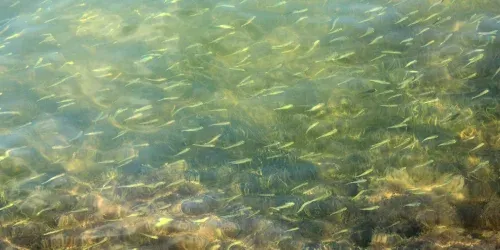
Seasonal Considerations
The effectiveness of streamer fishing can vary with the seasons. Early spring is an excellent time for casting heavy streamers to reach fish that are still deep, as water temperatures begin to rise and fish become more active and willing to chase streamers. In summer, streamers can be used to target fish in deeper, cooler water during the heat of the day or in shaded areas near banks and structure.
Fall is prime time for streamer fishing, as fish aggressively feed to prepare for winter, and large, articulated streamers can produce impressive catches during this period. Winter can be slower for streamer fishing, but using smaller streamers and a slower retrieve can still yield results, especially in tailwaters and spring-fed rivers where water temperatures remain more stable.
Streamer Fishing Tips
To maximize your success with streamer fishing, consider the following tips.
Match the Hatch
While often associated with dry fly fishing, applies to streamers as well; observe the local prey species and choose streamers that closely mimic their size, color, and behavior.
Vary your retrieve
Experimenting with different speeds and patterns can help find what triggers strikes; sometimes a slow, steady retrieve works best, while other times a fast, erratic strip is more effective.
Fish Deep
Use sinking lines or weighted streamers that help reach fish holding in deep water, especially during colder months or in heavily fished waters where fish may be wary.
Try Articulated Flies
These offer increased movement and can entice even the most reluctant fish to strike.
Observing Water Conditions
A crucial step when you streamer fish; clear water often requires more natural-looking streamers, while murky water calls for brighter, more visible patterns.
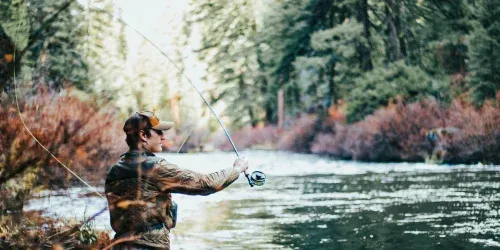
Conclusion
Fly fishing streamers offer a dynamic and effective way of catching fish, with a wide range of fish species, particularly larger fish that may be less inclined to rise to a dry fly. By understanding the different types of streamers, mastering various fishing techniques, and selecting the right gear, you can enhance your chances of success on the water. Whether you are targeting trophy-sized trout or simply looking for an engaging way to fish, streamer fishing is a valuable skill for any fly angler's repertoire.
FAQs
What is the difference between streamer fishing and dry fly fishing?
Streamer fishing uses submerged flies that imitate larger prey like baitfish, requiring an active retrieve to mimic struggling prey. This technique targets larger, predatory fish below the surface. Dry fly fishing uses floating flies that imitate insects on the water's surface, appealing to fish feeding near the top.
Which fish are best targeted using streamer flies?
Streamer flies are effective for targeting larger, predatory fish such as brown trout, rainbow trout, smallmouth bass, largemouth bass, pike, and some saltwater species like striped bass and snook. These flies work well in deep pools, undercut banks, and heavy cover.
What gear is recommended for streamer fishing?
When you fish streamers, use a fast action fly rod in the 6-8 weight range, a sinking or sink-tip fly line, and a thicker tippet (2X or 3X). Carry a variety of streamers in different sizes and colors to match local prey and conditions.
Related articles:











